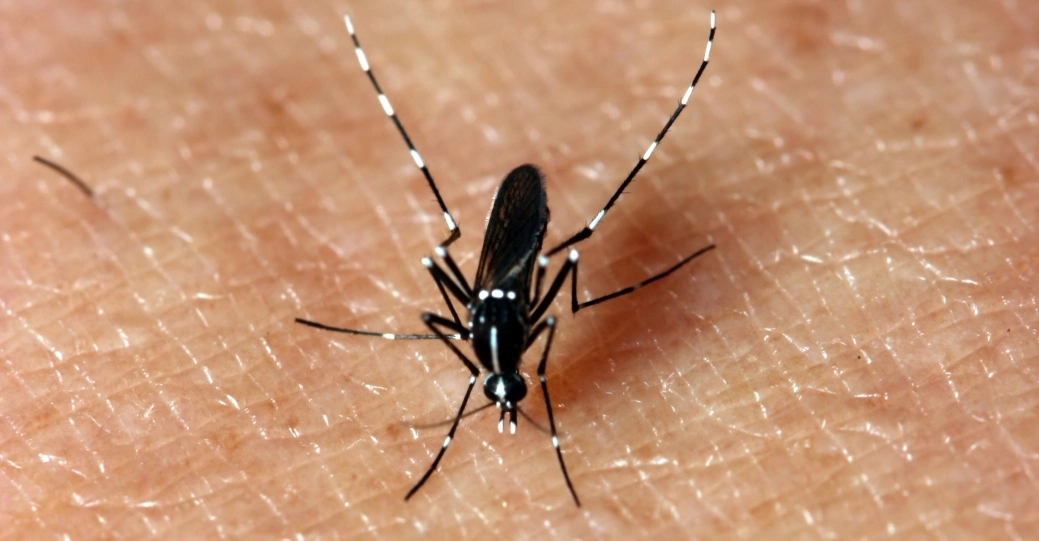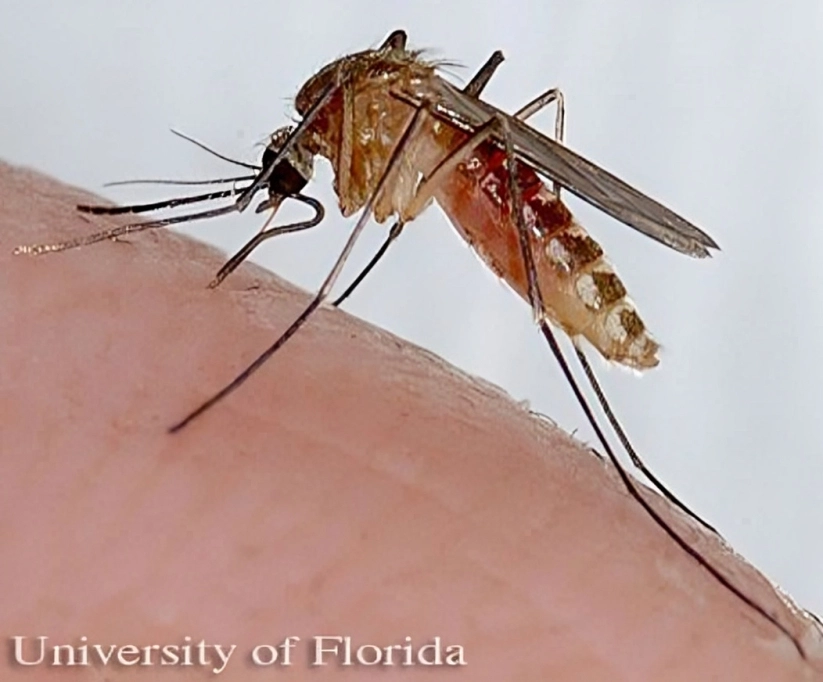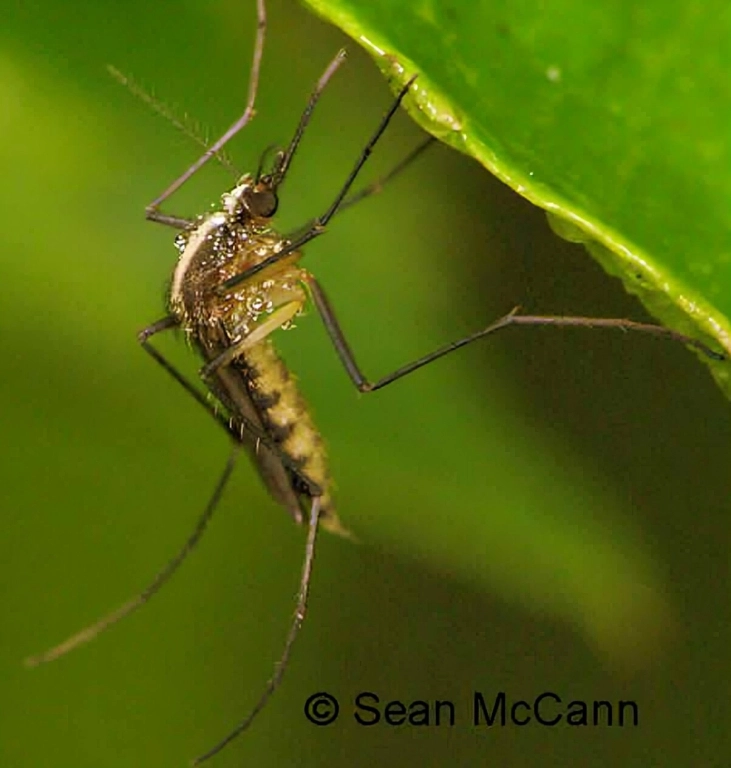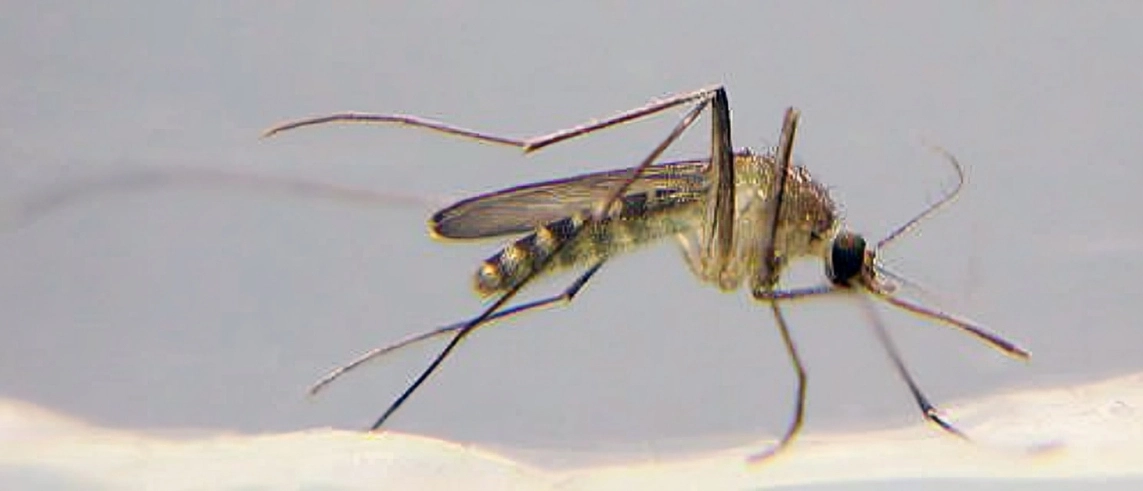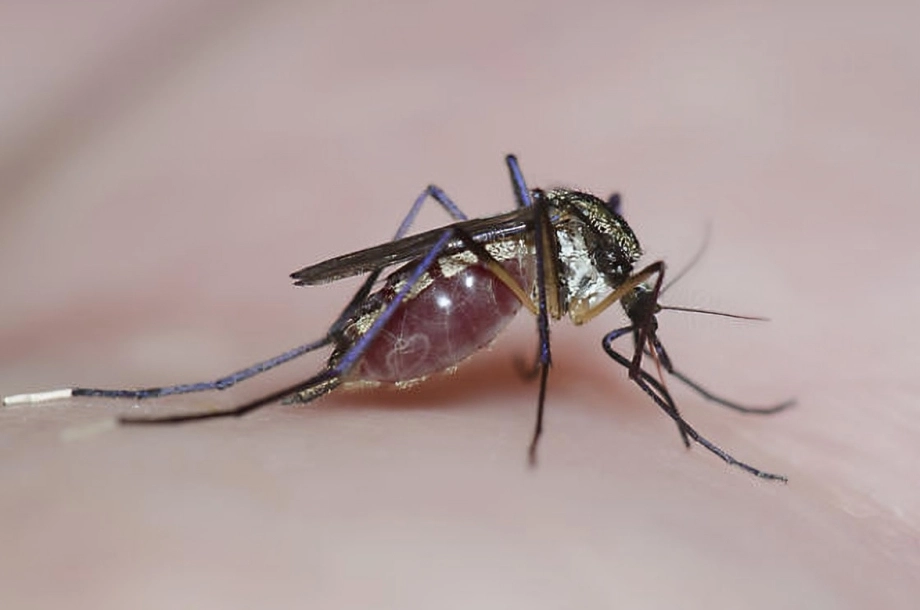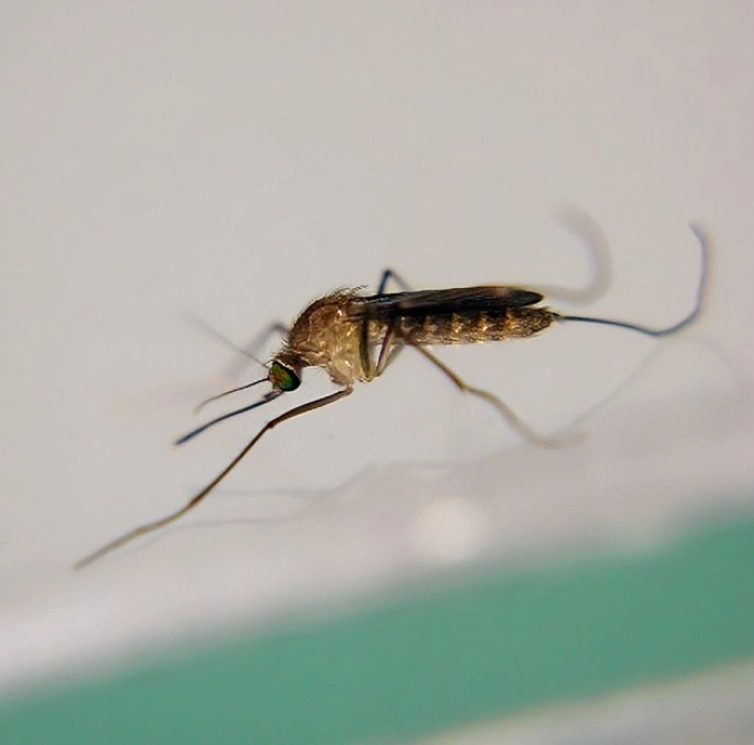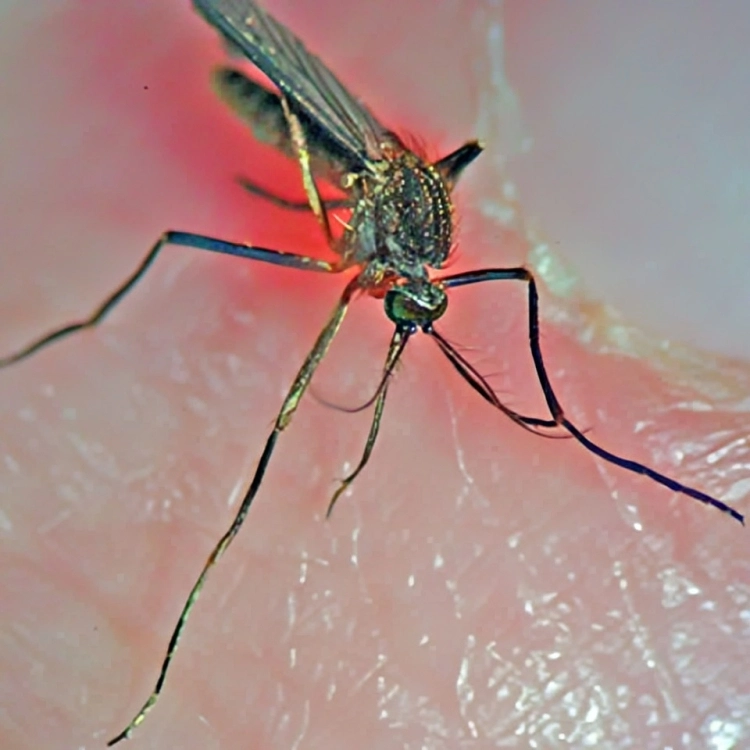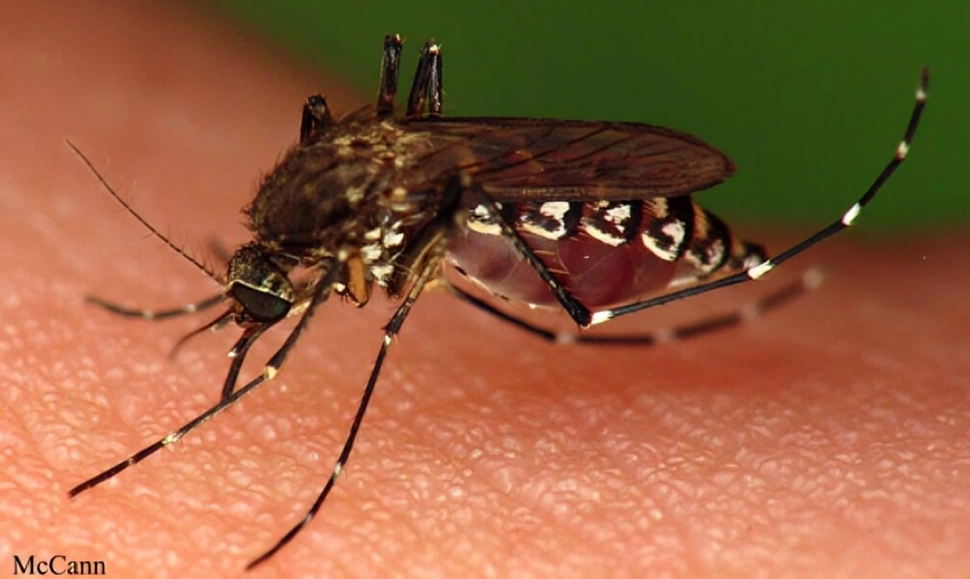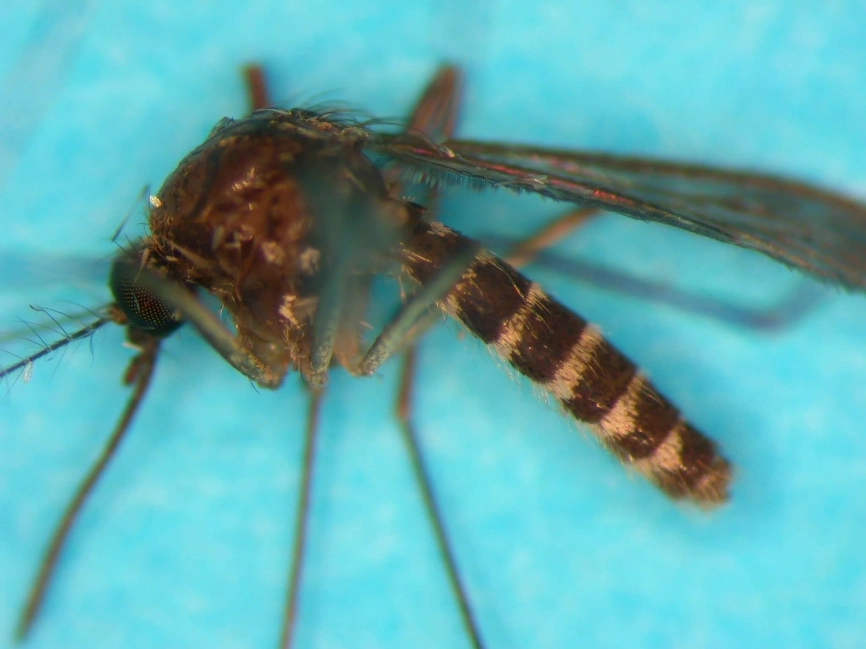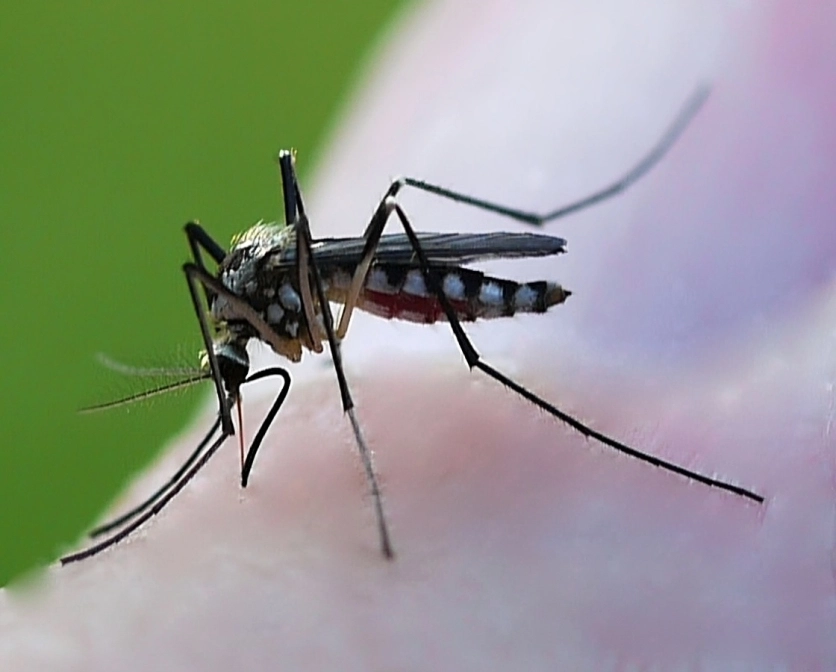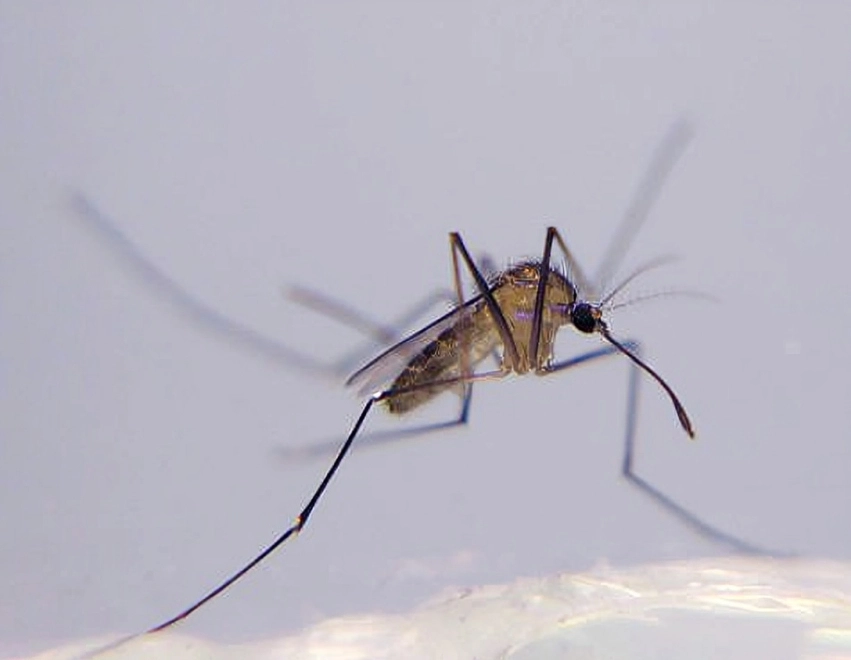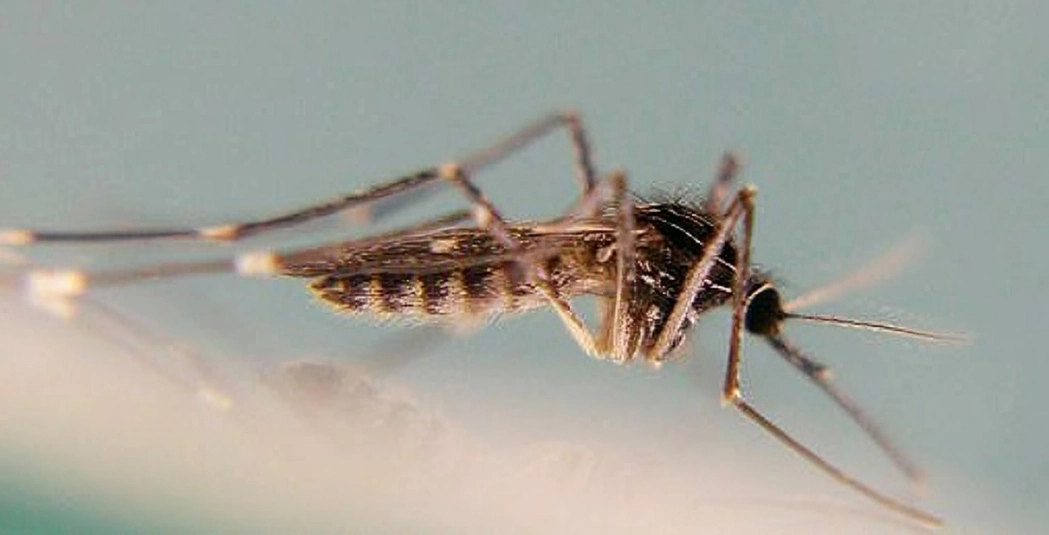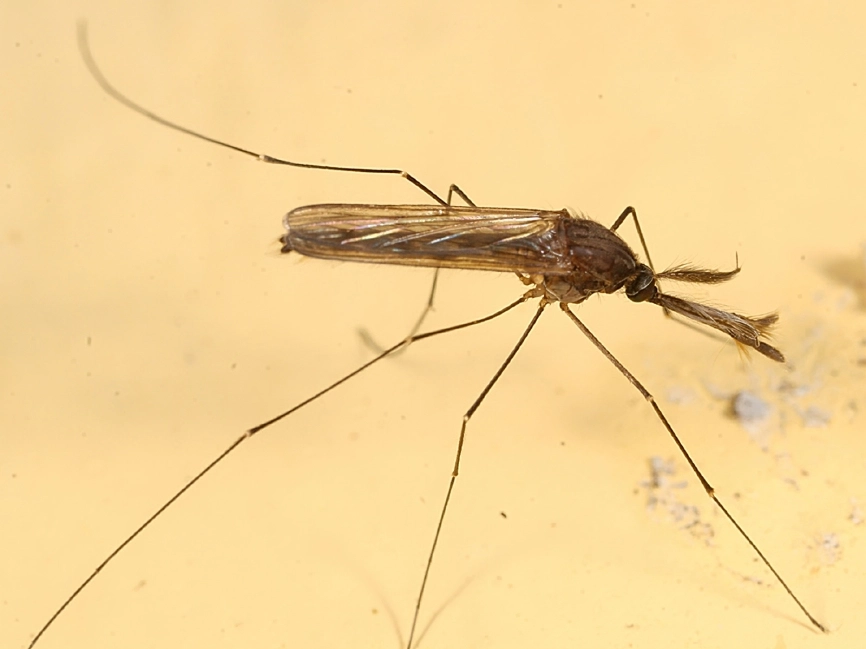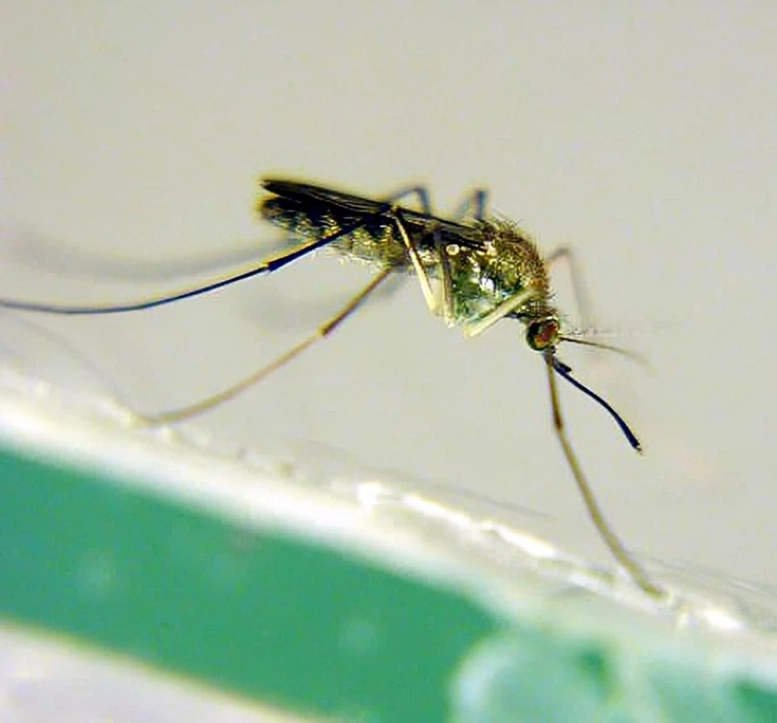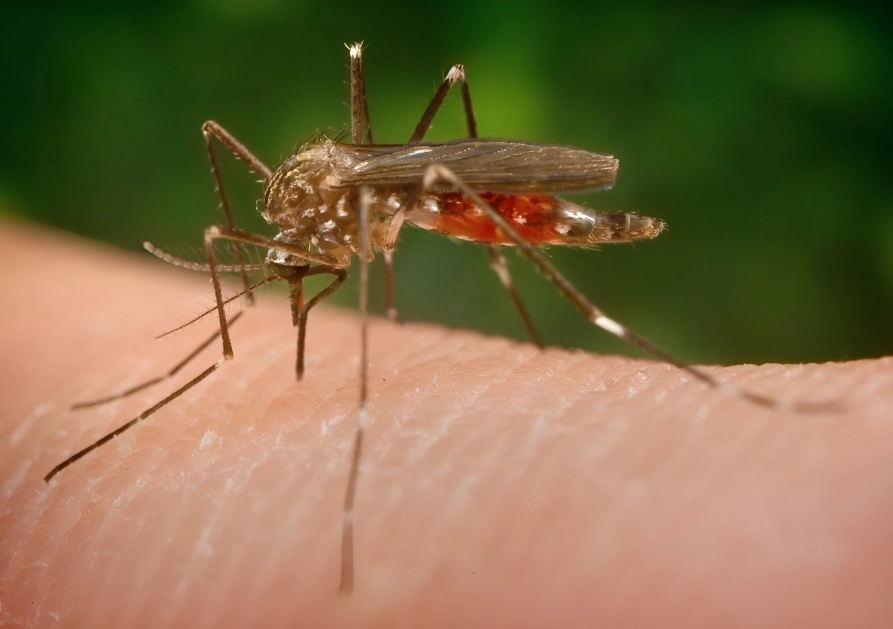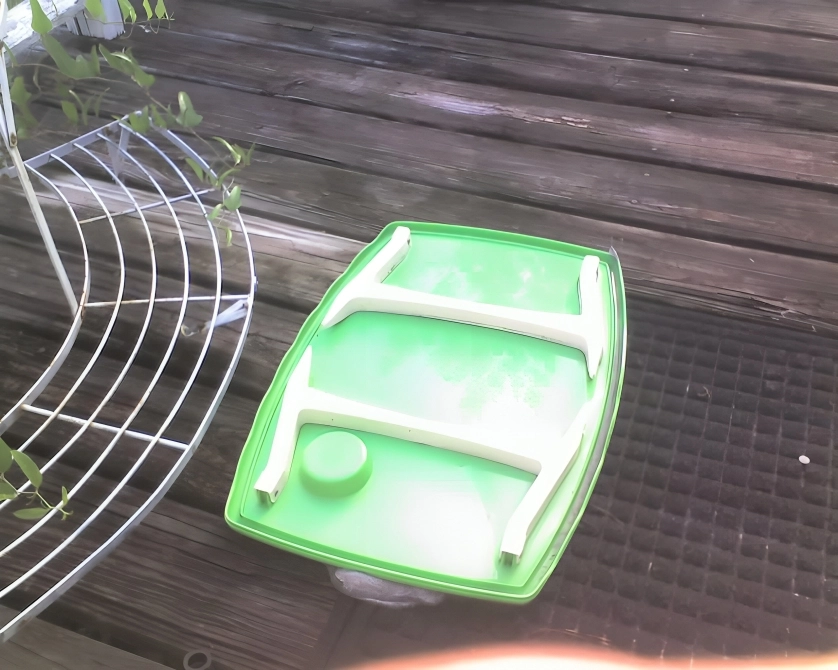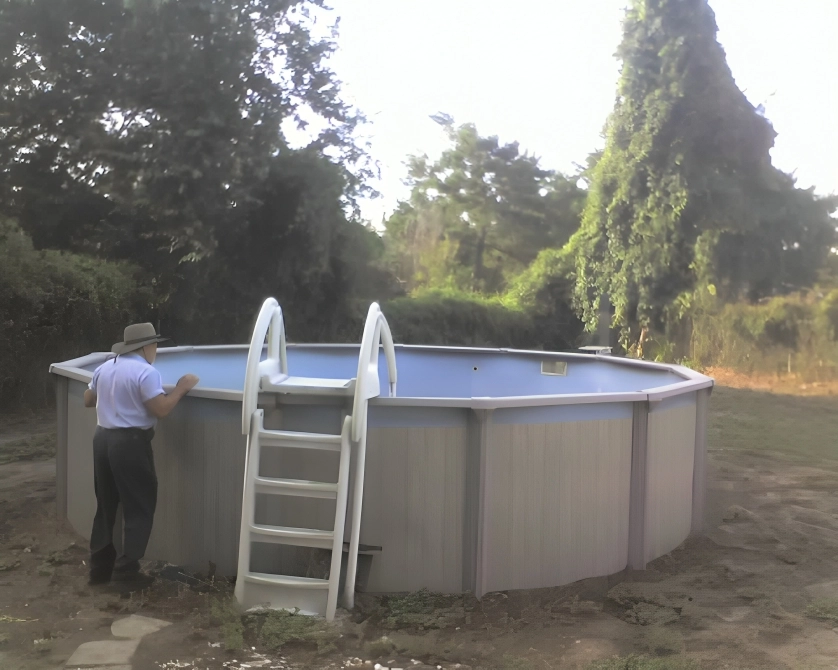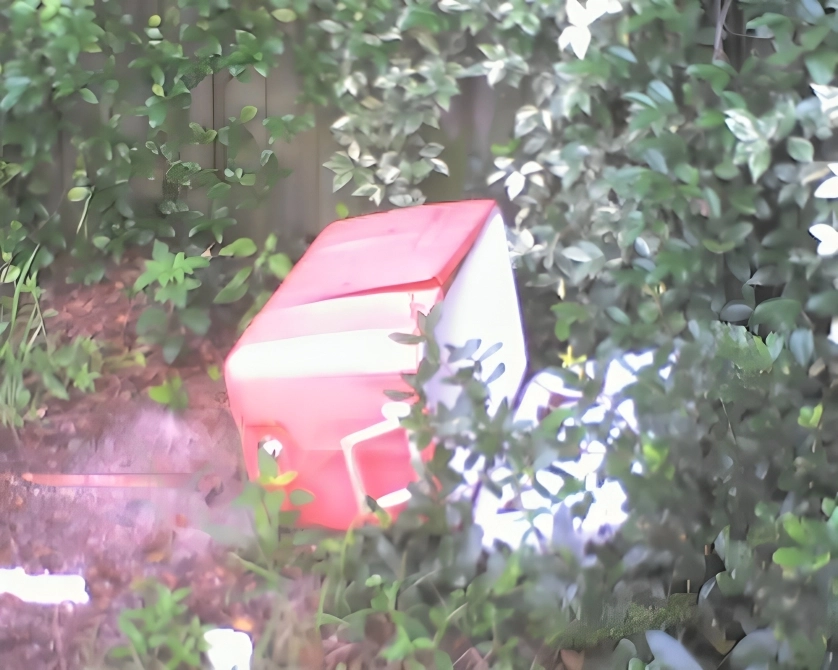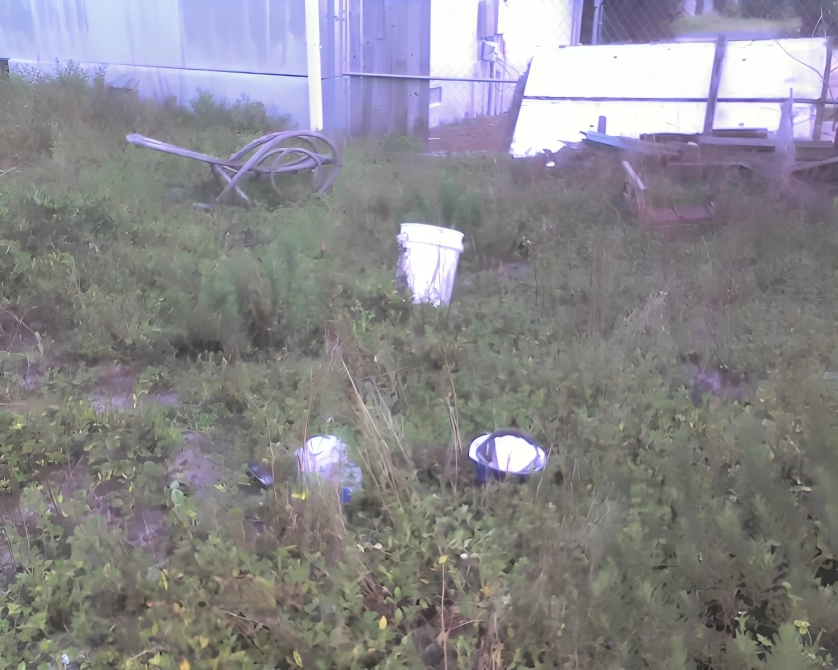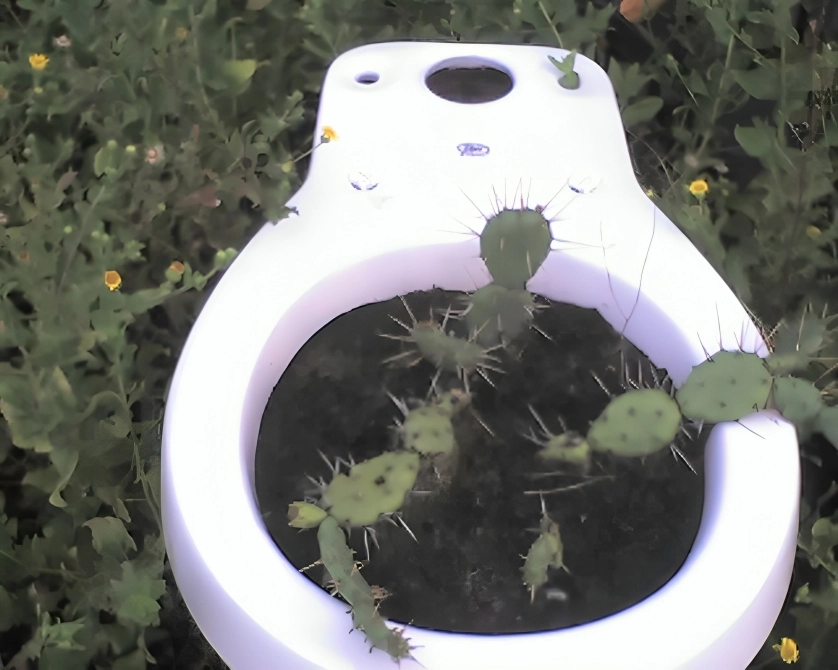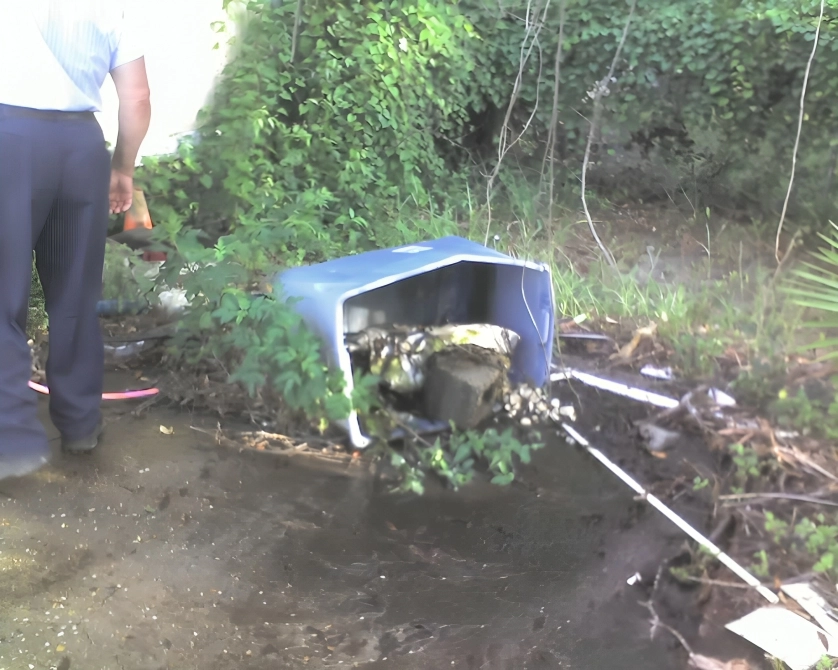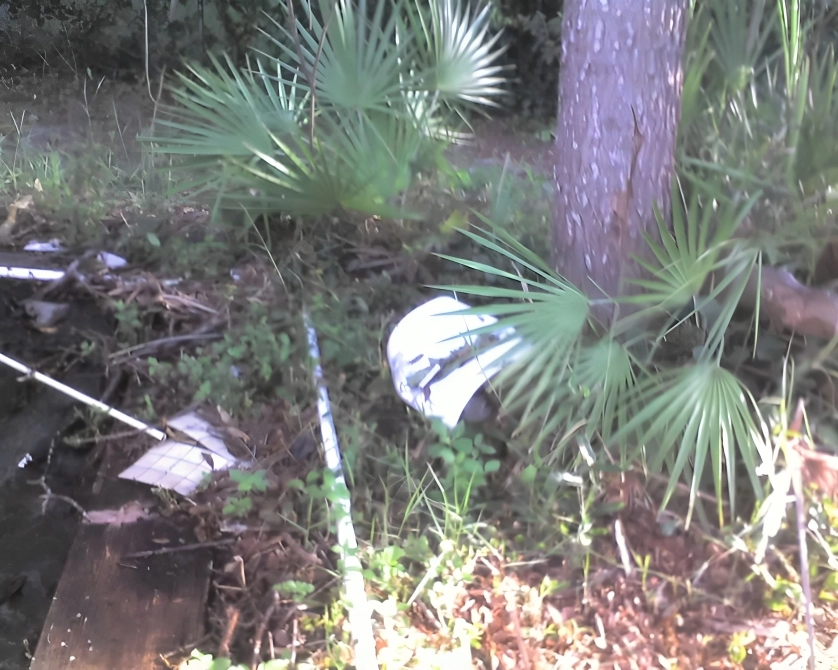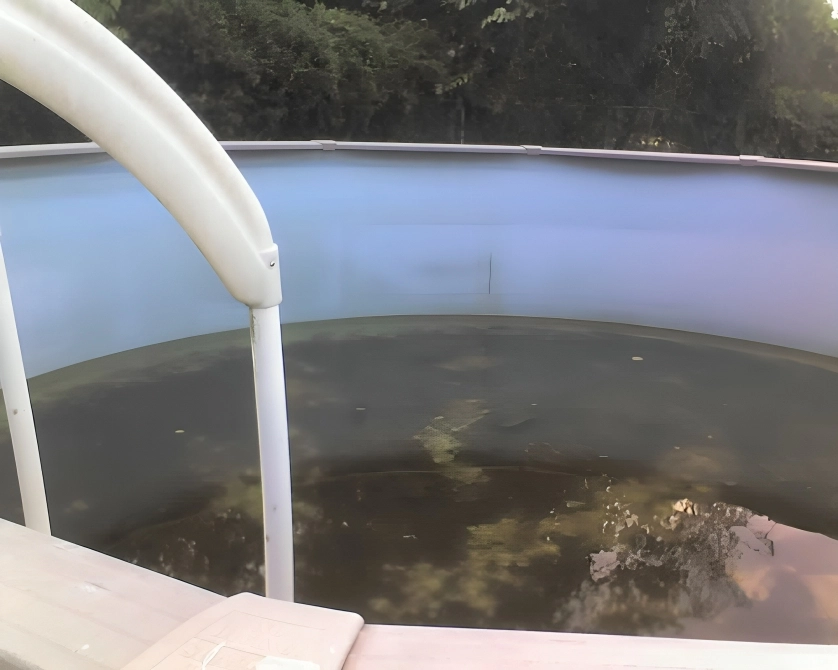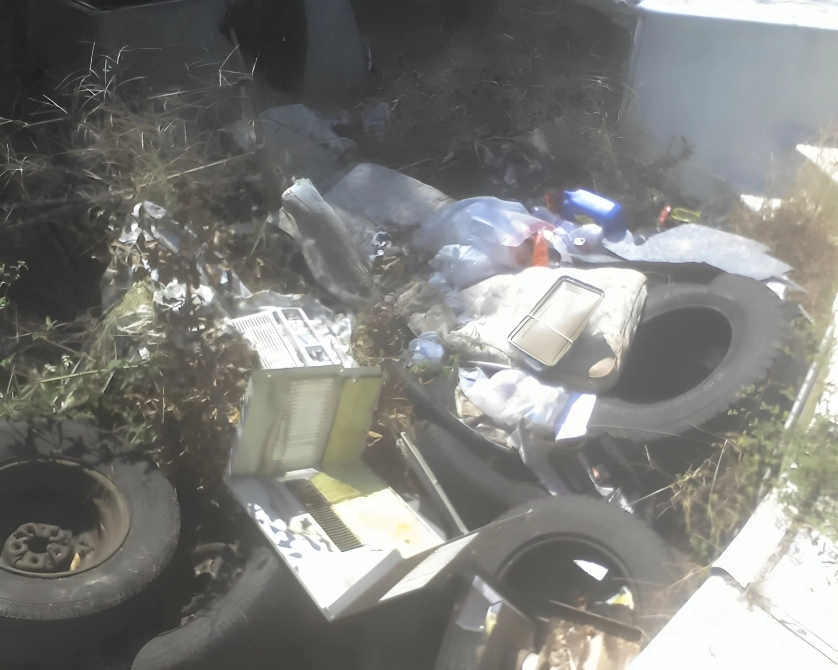Mosquito Facts
Mosquitoes are insects with two wings. There are over 3,500 different species of mosquitoes found in the world; over 90 of these species are found in Florida. 51 species have been found on Panama City Beach, each of which has a different habitat, behavior, and preferred source of blood. Mosquitoes are not only a nuisance as biting insects, but are also involved periodically in transmitting diseases to humans and animals.
Mosquito Diseases
Mosquito Life Cycle: There are over 90 species of mosquitoes in Florida and each one has a different biology. Adult females vary widely in size. For example, the Asian tiger mosquito (Aedes albopictus), which is common in Florida, is among the smallest. The largest mosquito in Florida, the Elephant Mosquito (Toxorynchites rutilus) does not bite humans or animals at all. Adult females can live from 2 to 14 days while the males live only long enough to mate usually 3 or 4 days. Want to learn more about adult mosquito identification? Visit the FMEL identification site Only female mosquitoes bite. They need the protein found in blood to produce eggs. A female can produce as many as 250 eggs from one blood meal. After the eggs are laid, they may hatch in a couple of days or it may be months before they hatch. The larva, or wiggler, emerges from the egg and grows from 1/16 to 1/4 inches in length in 4 to 10 days, depending on the temperature of the water they grow in and their food supply. The next stage is the pupa, or tumbler. This stage lasts only about 2 days. During this time the mosquito transforms from the aquatic larva into the flying adult. The pupa does not feed. Female mosquitoes can transmit diseases when they bite. In Florida, mosquitoes can transmit West Nile Virus, Eastern Equine Encephalitis, St. Louis Encephalitis, and dog heartworm. In the past, mosquitoes were responsible for epidemics of malaria and yellow fever in Florida. These diseases have been mostly eradicated from the state thanks, in part, to organized mosquito control programs. Mosquitoes do NOT carry AIDS, hepatitis, or leukemia.

Repellent Info
 Loading...
Loading...
The 5 D’s
Protection against the mosquito bite is taught by teaching the 5 D’s:
- Dusk (Stay indoors during this time due to high mosquito activity).
- Dawn (Stay indoors during this time due to high mosquito activity).
- Dress (Cover your skin with clothing. Remember: Long Pants and Sleeves.)
- DEET (Protect bare skin and clothing with a DEET mosquito repellent).
- Drain (Empty containers of stagnant water to prevent the breeding of mosquitoes)
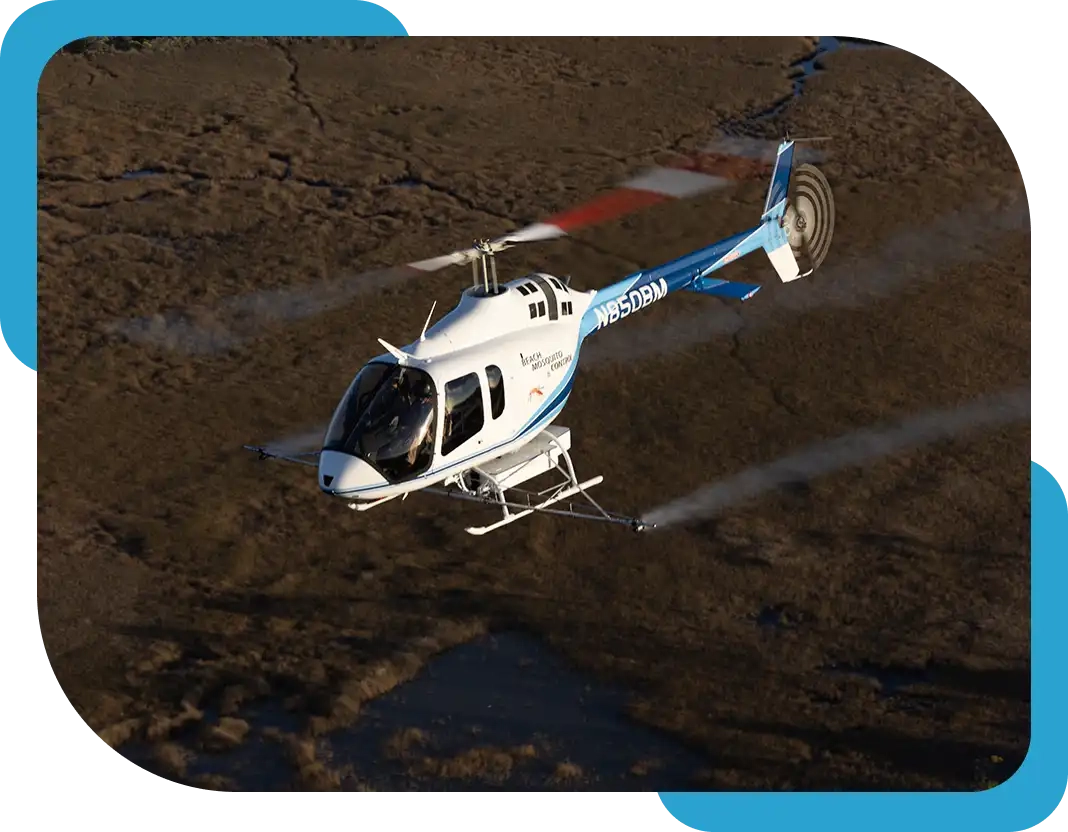
Mosquitoes & Their Impact
Common Mosquitoes
FAQs
Mosquito Biology
Yes. Mosquito attraction to humans is a very complex matter. Primarily, mosquitoes are attracted to the carbon dioxide (CO2) emitted from the breath and pores of humans. In addition to CO2 some species of mosquitoes are attracted to certain fragrances and colors.
Only female mosquitoes bite or take a “blood meal.” The blood is necessary for the development of her eggs. Typically, both male and female mosquitoes feed on plant nectar. The plant sugars provide energy for the mosquito. After the male mates with the female mosquito, eggs will begin to grow in her abdomen. For most species of mosquito, it is crucial that she takes a “blood meal” from a mammal, amphibian, or reptile. The protein from the blood causes the eggs to develop properly.
When the female mosquito pierces the skin for her “blood meal”, she injects a small amount of saliva into a capillary, the blood vessel closest to the skin. The saliva makes penetration of the proboscis (mouthparts) easier and prevents the blood from clotting. Welts or red bumps that may appear after the bite of the mosquito are actually an allergic reaction to the saliva. Some people are more allergic to mosquito saliva than others and tend to welt up more. Some people may be more allergic to specific species of mosquito than other species. The swelling and itching may last from a few hours to a few days. Occasionally individuals may be highly sensitive to mosquito saliva and swell significantly, even to the point where they need medical attention. In any case, people should avoid scratching these wounds, as bacteria from the fingernails may be introduced into the wound and cause infection.
The female mosquito needs the protein in blood to produce her eggs. The female mosquito injects saliva into the bite to keep blood from clotting. This makes it easier for her to suck up the blood. The cells of the immune system rush to the site of the bite and try to get rid of the saliva. As a result, there is swelling and itching–an allergic reaction. Some people tend to welt up more than others do because they are more allergic to the mosquito’s saliva. There are over 70 species of mosquitoes in the state of Florida. Therefore, individuals may be highly allergic to one type of mosquito and not very allergic to another. For this reason, some mosquito bites may cause a greater reaction than others.
Throughout the world there are over 3,000 species of mosquito species from 12 different genera, 30 of which exist throughout the entire state of Florida. Click here for more information. There are approximately 25 mosquito species in Bay County. Each type of mosquito has a common name and a scientific name, which includes a genus, and a species name. For instance, Asian tiger mosquito is the common name, while Aedes albopictus is the species name. Aedes albopictus is a container-breeding mosquito and is found in all 67 Florida counties. It is responsible for many citizen complaints.
All living species have their place in nature. The mosquitoes are no exception. They are an important link in the food chain. Many creatures depend on them as a source of food. While in their aquatic stage, mosquito larvae provide food for other aquatic insects, fish and amphibians. During the adult stage mosquitoes are the source of food for birds, bats, spiders, lizards and other insects. Both mosquito larvae and adults are an important link in the food chain.
The male and female mosquito need a form of liquid nourishment. They obtain this from plants. Just like honey bees, while feeding on nectar they also assist in the pollination of plants. They also will feed off the juice from bruised oozing fruits and plants.
Only the female mosquito bites. She needs a blood meal to obtain the protein necessary to produce eggs.
Personal Protection From Mosquitoes
During mosquito season it is recommended that people who wish to be less attractive to mosquitoes wear unscented products (hair spray, soap deodorant, etc.) and light colored clothing. Another method of deterring mosquitoes from biting is to wear a commercial repellent. A large variety of products are available to the consumer. The Federal Center for Disease Control and Prevention (CDC) recommends that a repellent should contain active ingredients approved and registered by the Environmental Protection Agency (EPA). Remember all repellents aren’t made for skin contact, some are to be used only on clothing.
Remember: Before using a repellent always read the entire label thoroughly.
Listed below are examples of active ingredients that can be used on the skin:
DEET (N, N-diethyl-m-toluamide)
Picardin (KBR 2023)
These active ingredients have demonstrated a high degree of repelling when used appropriately by following the label instructions carefully on the product.
It has long been known that the most effective repellents are those which contain DEET. DEET is the abbreviation for the chemical N.N-diethyl-meta-toluamide. DEET has been available to consumers since 1956 and is used by 50-100 million people each year. Products containing DEET are known to repel against mosquitoes, no-see-ums, fleas, ticks, gnats, horse flies, deer flies, yellow flies and chiggers. For convenience in application repellents are available in a variety of forms: pump sprays, aerosols, lotions, creams, soaps and sticks. There are over 40 products available to the consumer containing from 5% to 95% DEET. In general, the more inexpensive products contain less than 10% DEET, while the more expensive ones contain at least 20% DEET.
Products containing 35% DEET or more can often be found in the camping section of stores or outdoor supply stores.
If a little DEET is good; is a lot of DEET better?
Not necessarily. In tests done by the Army, repellents with 30-40% DEET worked twice as well as repellents with 75% DEET.
REMINDER: DEET is absorbed into the skin. Therefore, higher concentrations of DEET increase the potential for skin reactions to the repellent.
Read the label and check to see what percentage of the product is DEET. This information is found under the active ingredients. The label may say DEET or it may spell out the chemical name. Some people need to use higher concentrations, while a lesser concentration may suffice for others. It is always best to use the lowest concentration that is effective. People should check to see if it is a controlled release formula (long lasting) and compare the amount of product and the type of application. Lotions provide the most even coverage. Sprays are more convenient but require greater care in applying. The entire label should be read before choosing what is best for an individual or a family.
Products containing oil of lemon eucalyptus have also been approved and registered with the United States Environmental Protection Agency (EPA). They have been evaluated for both safety and effectiveness when used according to the label instructions.
Note: Products containing oil of lemon eucalyptus should not be used on children under the age of 3 years.
Note: The American Academy of Pediatrics updated 2005 recommendations for the use of DEET on children: products with a concentration of 10% – 30% are safe when used according to the label instructions.
Some persons are allergic to it. It can irritate eyes and sensitive skin, sometimes causing them to dry out. Infants and children tend to be more sensitive to DEET than adults. To minimize the adverse reaction to DEET the following can be done:
*** Apply repellent sparingly and only to exposed skin.***
- Apply repellent to clothing to reduce DEET absorption through the skin.
- Avoid using products with DEET concentrations over 30%. This pertains especially to children and infants.
- Avoid inhalation or ingestion of repellents, contact with eyes, wounds or irritated skin.
- Avoid applying repellents to portions of children’s hands, which are likely to come into contact with their eyes or mouth.
While DEET is an effective repellent, high concentrations can feel unpleasantly oily and can melt plastic, watch crystals and paint finishes. It is safe on nylon, cotton and wool but it can damage rayon, acetate and spandex. Repellents should be tested on an inside seam of polyester/cotton blends of clothing to see if possible damage occurs. Products with citronella, an oil extract from lemon scented grass or from eucalyptus, can be purchased from health food or camping stores. Avon Skin-So-Soft ® is widely used as a repellent, but it is not effective for all people. These products must be reapplied more frequently, and they are much less effective than DEET.
When the Citrosa plant leaves are moved they release citronella, a natural and well-known, but not always effective, mosquito repellent. Citronella is sold as a repellent in lotion form but is more commonly sold as citronella candles. The candles, used in groups, can be effective as long as the citronella lemony smell is present. However, some studies have shown that Citrosa plants do not repel mosquitoes or keep them from biting humans that are nearby, even when the leaves are crushed and the citronella smell is released. In fact, mosquitoes freely land on the plant and feed on it, sucking sugar from the stems. There are no known plants that, when planted near houses, prevent mosquitoes from entering the building or from biting humans that pass near these plants.
Regardless of the brand name or type of light, bug zappers do not reduce the number of mosquito bites you will get. Studies have shown that although mosquitoes are killed by the devices, their light attracst more mosquitoes into the area than would be there without the devices, just like a porch light. Yes, they kill mosquitoes but they also kill beneficial insects like dragonflies. Thus, they are not recommended. If you already own a bug zapper and want to use it just to get the satisfaction of hearing the “zap”, then place it where it will attract mosquitoes away from the area you want to protect.
Health and Disease
Arbovirus is short for arthropod-borne disease. Arboviruses are a large group of viruses spread by blood sucking insects. In the United States, infected mosquitoes are mostly responsible for spreading arboviruses. Birds are the main source of infection for the mosquito. Sometimes these viruses can be transmitted to horses, other animals and humans
No. Ever since the beginning of the HIV epidemic, there has been a concern that transmission could possibly occur from blood sucking insects. Studies conducted by the CDC and other institutions have proved that transmission of the HIV virus from mosquitoes or other blood sucking insects is negative.
All experiments and observations conducted observing the biting behavior of insects indicated the following: When an insect bites a person it doesn’t inject its own or previous victims’ blood into the next bird, animal or human. Instead it injects its own saliva. The saliva acts as a lubricant so the insect can feed efficiently. The HIV is fragile and can only live for a very short period outside of its environment. Therefore, its life span is short inside an insect. Also, infected people with HIV don’t have constant elevated levels of HIV present in their blood stream. The HIV level varies. Even if the virus enters a mosquito or another blood sucking insect the insect doesn’t become infected and therefore cannot transmit the HIV to the next human it bites. Insect mouth parts are small. After feeding they contain tiny amount amounts of blood particles. Normally, insects don’t travel immediately from one person to the next and feed again. They fly to a resting place to digest their meal. However, diseases like yellow fever or malaria are transmitted through certain species of mosquitoes by their saliva.
Saint Louis Encephalitis or SLE is a mosquito-transmitted viral disease. It was first recognized in St. Louis, Missouri, in 1933. Epidemics occur sporadically throughout the United States, during which several hundred people may become ill, sometimes fatally. Symptoms of SLE are similar to other viral infections and may include high fever, nausea, severe headaches and tiredness. The severity of the symptoms varies from person to person. They range from no symptoms at all to mild flu-like symptoms to severe flu-like symptoms and even death. Only 1 in 200 people who become infected with SLE virus will develop the disease. The likelihood of developing SLE symptoms is generally higher in older people.
Filariasis is a parasitic disease. It is caused by microscopic thread-like worms. It spreads from person to person by mosquito bites. When a mosquito bites a person who has lymphatic filariasis present in their blood stream the mosquito can then become infected. A person bitten by the infected mosquito can contract this disease. These worms travel to the lymph vessels and mature into adults. Here they reproduce and introduce millions of microscopic worms into the blood. On average the adult worm lives up to 7 years. This disease affects approximately 120 million people in 80 countries. These areas are the subtropical regions of Asia, Africa, Western Pacific, South America and parts of the Caribbean. This disease if not treated can lead to elephantitis.
Dengue Fever is a disease caused by four closely related viruses (DEN-1, Den-2, Den-3 or Den-4). These viruses are transmitted by the bite of an infected Aedes mosquito. The mosquito becomes infected after it bites a person who has dengue. After approximately one week an infected mosquito can transmit the virus by biting a healthy person. The symptoms are high fever, severe headache, backache, joint pains, nausea and vomiting, eye pain, and rash.
Dengue hemorrhagic fever (DHF) has the following symptoms: a fever that lasts 2-7 days along with flu-like symptoms. Infection is followed by hemorrhagic manifestations (the tendency to bruise easily, other types of skin hemorrhages, bleeding nose or gums, with hemorrhagic manifestations or possible internal bleeding). DHF is a more severe infection and if not treated can lead to circulatory system failure and shock followed by death. Mortality due to DHF is less than 1 %.
Local mosquitoes control programs and laboratories throughout the state of Florida have developed several monitoring techniques to determine the presence of Saint Louis and Eastern Equine Encephalitis (EEE). The mosquitoes that are carriers of encephalitis primarily feed on birds. One method of monitoring these viruses is by using caged chickens strategically located throughout the county. A small blood sample from each chicken is taken periodically and tested for possible presence of antibodies to SLE or EEE. If antibodies are found, this indicates the chicken has recently been exposed to encephalitis virus that was transmitted through the bite of a mosquito.
Another method some agencies use is monitoring wild birds. Because those mosquitoes may also feed on humans, there is an encephalitis risk. Another recently developed method of detecting the presence of encephalitis in wild mosquito populations involves trapping mosquitoes, grinding them up and testing for encephalitis RNA. If present, the potential exists for transmission to humans. This test is called CR (polymerase chain reaction) testing and is similar to the DNA testing used as evidence in court to tie a particular individual to a crime scene. Mosquito agencies constantly gather important data and monitor their area through their surveillance programs. The surveillance program is an important link in targeting the responsible species capable of carrying the disease. Mosquito agencies working together with the state laboratories are striving for prevention of possible epidemic outbreaks.
Because St. Louis encephalitis (SLE) and eastern equine encephalitis (EEE) can only be acquired through the bite of an infected mosquito, the simplest way to reduce disease risk is to avoid being bitten by mosquitoes. Mosquitoes are generally more active during the hours near dawn and dusk, indoor activities should be planned for those times, particularly when encephalitis alerts are given. Remember to practice good personal mosquito prevention practices as mentioned previously.
No. Saint Louis encephalitis (SLE) is transmitted to people through the bite of an infected mosquito. Being near chickens, eating eggs or chicken meat will not cause SLE, even if the chicken was infected.
In 1933 it was first isolated in the United States. It is a rare disease. Since 1964 there have been only 164 confirmed cases in the United States. EEE is found in the Caribbean, Central and South America, and North America. The majority of the cases reported in the United States occur from the eastern seaboard states, the Gulf of Mexico and a few inland Midwest regions.
This rare disease can be spread to both horses and humans by infected mosquitoes. It is in the group of the most serious mosquito-borne diseases that can affect the central nervous system and cause severe complications and possible death.
Western Equine encephalitis, St. Louis encephalitis and LaCrosse encephalitis are very similar. The life cycle of these viruses is complex. It involves a specific species of mosquito (Culiseta melanura) that lives in a marshy or swampy habitat. These mosquitoes feed only on birds. They do not feed on mammals or humans. In extremely rare cases the virus enters another habitat through other mosquitoes that feed on both birds and mammals. The virus can then be transmitted to birds, mammals and humans.
Yes, they can harm your pet dog or cat. Heartworm is caused by juvenile worms (called microfilariae) leaving the mosquito’s proboscis and being deposited on the skin of a dog or cat while the mosquito is taking a blood meal. These microfilariae find the puncture wound made by the mosquito and crawl into the animal’s bloodstream. Heartworm is a serious problem that can lead to death for the dogs and cats in Florida. However, veterinarians can prescribe medication to prevent heartworm.
According to available research, a homeowner is not in danger of contracting cancer from mosquito pesticides sprayed infrequently and at low doses by mosquito control programs. Most of the mosquito control chemicals are “non-restricted use” pesticides. This puts them in the same category as the garden and household sprays that can be purchased at the store. In fact, one common mosquito adulticide (Malathion) is a very common home and garden insecticide. Mosquito control agencies use these insecticides in much smaller doses than one might use to control larger household insect pests like the cockroach, fly or wasp.
Any person or pet that accidentally gets hit by the spray may feel a momentary slight stinging or burning sensation on the skin or in the eyes. Unless a person is very sensitive or allergic to chemicals, washing the skin with water is all that needs to be done. At the low insecticide dosage used, no other symptoms should be experienced. If other symptoms are experienced, check with a physician. The mosquito control program maintains a list of chemically sensitive persons who are called before their area is sprayed. It is the responsibility of citizens to contact their local mosquito control agency and inform them of their allergies. After providing the agency with a contact phone number they will be placed on the phone spray notification list.
The pesticides used to control adult mosquitoes have been registered by the Environmental Protection Agency and reviewed by the State Department of Agricultural and Consumer Services for use around commercial, agricultural and residential areas. These aerosol sprays are almost invisible because of their extremely small droplet size. Because of their tiny droplet size, they float in the air and therefore, usually float around objects and people. Scientific studies have shown that people standing or jogging had negligible contact with spray materials during spraying operations. Spray equipment is designed to scatter the spray material from the spray truck. Therefore, children can safely go outdoors immediately after spraying. For safety reasons they must remain a distance of 25 feet from the spray truck.
Organophosphate insecticide poisoning usually results after prolonged exposure to, misuse of, or direct contact with a concentrated pesticide product. Misuse of label instructions or accidental spillage may result in injury to an individual or contamination of water sources. Headache, nausea, vomiting, dizziness, burns, profuse sweating, and unconsciousness are some of the symptoms which may be experienced when significant poisoning has occurred. It is for this reason that an individual must know what has been sprayed. ALWAYS READ AND FOLLOW THE LABEL INSTRUCTIONS!
If poisoning is suspected or has occurred, call the poison control or seek medical advice immediately. If possible have the label with you when you call. FLORIDA POISON CONTROL CENTER at (800) 282-3171.
Though some individuals may be sensitive to some pesticides, mosquito control treatments, applied correctly, using EPA-registered products, will not harm humans or pets and are an important practice for protecting the public from mosquito-borne diseases. That said, we do offer residents the ability to be notified by email in advance before a scheduled treatment is to occur, so that these individuals can plan accordingly.
Other Control Measures
There are many things that homeowners can do to reduce mosquito problems. These include:
- Empty all pans and saucers under potted plants
- Eliminate any standing water in the yard and keep grass mowed
- Keep all roof gutters clean and clear of debris
- Replace water in pet dishes every couple of days
- Cover trash or “spare parts”
- Discard old tires or stack flat and keep them covered
- Cover rain barrels with screening
- Maintain swimming and wading pools
- Flush bromeliads with fresh water every few days
- Fill tree holes with sand or cement
- Remove debris from flat roofs
- Stock natural or man-made ponds with mosquito fish
- Keep boats covered and the bilge empty
- Keep bird baths, barbecue grills, wheelbarrows, etc., overturned or flushed once a week.
- Flush large animal water troughs weekly
Yards should be checked for mosquitoes breeding in all of the above locations. A small amount of water can breed hundreds of mosquito larvae! Mosquito control will gladly send a technician out to check yards and show homeowners what mosquito larvae look like so they can check for breeding on their own.
There are a few alternatives to pesticides for controlling adult mosquitoes. Mosquito control operates under an Integrated Mosquito Management (IMM) philosophy. This means using a combination of mechanical, biological and chemical control methods. However, sometimes there is no alternative to chemical control.
Source reduction, or reducing the amount of standing water available for mosquito breeding, is a viable alternative. There are several other alternatives. Vertebrate predators such as fish and birds, invertebrate predators such as insects and flatworms, pathogens (bacteria, fungi or viruses) and botanicals which are derived from plants, are all effective at reducing mosquitoes.
One of the more successful alternatives to pesticides for controlling mosquitoes is the use of Gambusia, also known as mosquito fish, which can eat large numbers of mosquito larvae.
Mosquito control does not recommend the use of the following alternatives to pesticides because they are not effective:
- Bug zappers
- Citrosa plants
- Bug lights
- Ultrasonic devices
Male mosquitoes swarm during mating season. Some will rest on the sides of a house together. Both male and female mosquitoes will seek shade during hot weather and, if a house offers cool, shady resting spots, then mosquitoes will cling to the walls. A sample of the mosquitoes collected for the technicians may reveal that they are not biting mosquitoes.
Often large swarms of midges cling to the sides of buildings. These look very much like mosquitoes, but do not bite. They are often called “blind” mosquitoes. If they are determined to be true mosquitoes, there may be a serious breeding problem in the vicinity of the house. If the problem keeps recurring, mosquito control can send a technician to inspect the areas around the house. The technician will more than likely be able to find where the problem is and take care of it.
To eliminate the immediate problem of adult mosquitoes clinging to the house, spray the bristles of a broom with mosquito repellent and sweep them from where they are clinging. There are many repellents and sprays available to keep mosquitoes away from a house. Mosquito Control does not recommend bug zappers, citrosa plants or any other control techniques that do not include eliminating all water sources to reduce potential mosquito breeding sites.
There are a variety of methods used to kill mosquitoes; spraying adults is only one. It is also the most visible method a program might use. Some other methods used by mosquito control programs are as follow:
- Applying pesticides to water to kill mosquito larvae
- Stocking mosquito fish in permanent ponds
- Draining areas before mosquito larvae can become adults
- Flooding areas to prevent mosquitoes from breeding
- Eliminating containers that breed mosquitoes
- Advising people how to reduce mosquitoes in their yard.
People can help reduce the mosquito problem by checking back yards for containers, even very small ones that hold water. Citizens should look for pet dishes, tin cans, flower pot holders, plugged gutters, tires, bird baths, kiddy pools, toys, or bromeliads. Water should be dumped every third day if the source is not eliminated. Containers that are too large to turn over should be covered.
Unfortunately, there is no way to stop mosquitoes from mating. Although they eat larvae and adult mosquitoes, bats, birds and other vertebrates do not control mosquitoes to the level people demand or the level that prevents disease transmission.
Mosquito Diseases
Malaria
Malaria is a mosquito-borne disease caused by a parasite. People with malaria often experience fever, chills, and flu-like illness. Left untreated, they may develop severe complications and die. In 2013 an estimated 198 million cases of malaria occurred worldwide and 500,000 people died, mostly children in the African Region. About 1,500 cases of malaria are diagnosed in the United States each year. The vast majority of cases in the United States are in travelers and immigrants returning from countries where malaria transmission occurs, many from sub-Saharan Africa and South Asia.
Dengue
With more than one-third of the world’s population living in areas at risk for infection, dengue virus is a leading cause of illness and death in the tropics and subtropics. As many as 400 million people are infected yearly. Dengue is caused by any one of four related viruses transmitted by mosquitoes. There are not yet any vaccines to prevent infection with dengue virus and the most effective protective measures are those that avoid mosquito bites. When infected, early recognition and prompt supportive treatment can substantially lower the risk of medical complications and death.
Dengue has emerged as a worldwide problem only since the 1950s. Although dengue rarely occurs in the continental United States, it is endemic in Puerto Rico and in many popular tourist destinations in Latin America, Southeast Asia and the Pacific islands.
Chikungunya
Chikungunya (pronunciation: chik-en-gun-ye) virus is transmitted to people by mosquitoes. The most common symptoms of chikungunya virus infection are fever and joint pain. Other symptoms may include headache, muscle pain, joint swelling, or rash. Outbreaks have occurred in countries in Africa, Asia, Europe, and the Indian and Pacific Oceans. In late 2013, chikungunya virus was found for the first time in the Americas on islands in the Caribbean. There is a risk that the virus will be imported to new areas by infected travelers. There is no vaccine to prevent or medicine to treat chikungunya virus infection.
Travelers can protect themselves by preventing mosquito bites. When traveling to countries with chikungunya virus, use insect repellent, wear long sleeves and pants, and stay in places with air conditioning or that use window and door screens.
West Nile Virus (WNV)
West Nile virus (WNV) is most commonly transmitted to humans by mosquitoes. You can reduce your risk of being infected with WNV by using insect repellent and wearing protective clothing to prevent mosquito bites. There are no medications to treat or vaccines to prevent WNV infection. Fortunately, most people infected with WNV will have no symptoms. About 1 in 5 people who are infected will develop a fever with other symptoms. Less than 1% of infected people develop a serious, sometimes fatal, neurologic illness.
Eastern Equine Encephalitis (EEE)
EEE is one of the most severe mosquito-transmitted diseases in the United States with approximately 33% mortality and significant brain damage in most survivors. There is no specific treatment for EEE; care is based on symptoms. You can reduce your risk of being infected with EEEV by using insect repellent, wearing protective clothing, and staying indoors while mosquitoes are most active. If you think you or a family member may have EEE, it is important to consult your healthcare provider for proper diagnosis.
Zika Virus
Zika virus is spread to people through mosquito bites. The most common symptoms of Zika virus disease are fever, rash, joint pain, and conjunctivitis (red eyes). The illness is usually mild with symptoms lasting from several days to a week. Severe disease requiring hospitalization is uncommon. In May 2015, the Pan American Health Organization (PAHO) issued an alert regarding the first confirmed Zika virus infection in Brazil. The outbreak in Brazil led to reports of Guillain-Barre syndrome and pregnant women giving birth to babies with birth defects and poor pregnancy outcomes.
Mosquito Habitats
Mosquitoes will breed in any standing fresh or brackish (salty) water. Certain species prefer different types of water and habitats. Different species will breed in containers, salt marshes, woodland pools, plants (such as bromeliads), and ditches. Mosquitoes will usually stay near their breeding areas and travel limited distances, however, they can be carried by wind miles from their breeding habitat. Pictured below are some examples of habitats where you may find mosquitoes breeding around your home.


